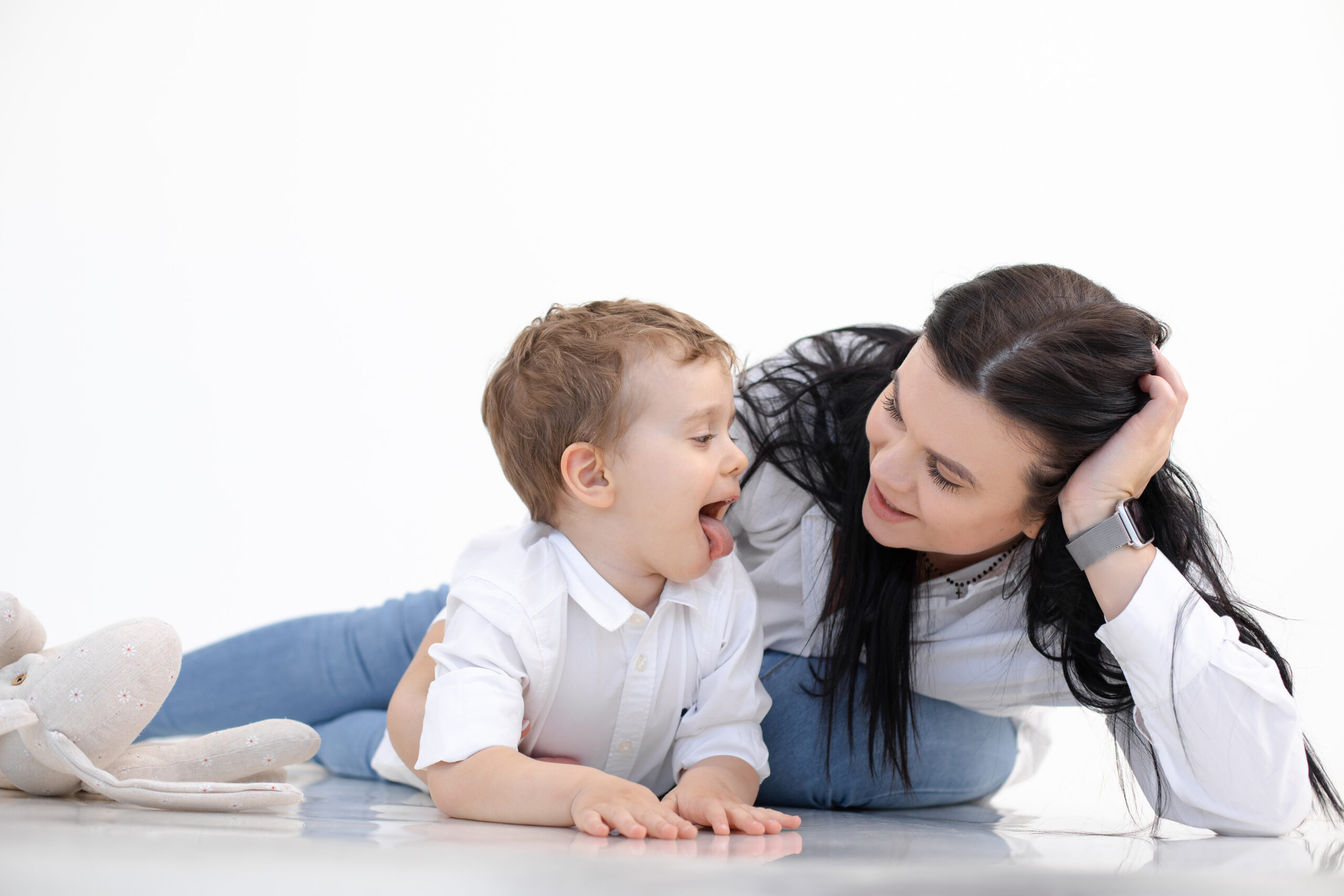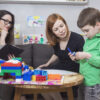
As children grow and develop, they reach different milestones in their communication skills. Speech and language milestones for children are important markers of progress that parents and caregivers can use to track their development and identify any potential delays or concerns. In this blog post, we will discuss age-appropriate developmental speech and language milestones for children. Contact us if you’d like to schedule a free screening to determine if your child is on track with their speech development.
Communication and Language Milestones for Infants
Consider the following communication milestones for children under one year old:
Birth to 3 Months
During the first three months of life, infants communicate primarily through crying, cooing, and facial expressions. They may also start to make vowel-like sounds, such as “ah” and “ooh,” and respond to familiar voices and sounds.
3 to 6 Months
At this stage, infants begin to babble, combining consonant and vowel sounds, such as “ba-ba” or “ma-ma.” They may also start to imitate sounds and respond to their name.
6 to 12 Months
Between six and twelve months, babies’ speech and language skills develop rapidly. They may start to say simple words, such as “mama” or “dada,” and understand simple commands, such as “no” or “come here.” They also engage in turn-taking during conversations and use gestures, such as waving or pointing, to communicate.
Speech and Language Milestones for Toddlers
By one year old, children should be able to communicate their needs in certain ways. Here are some speech and language milestones to consider for toddlers:
12 to 18 Months
At this age, children begin to use a variety of words and put two words together to form short phrases, such as “more juice” or “my toy.” They can also follow simple instructions and use gestures to communicate their needs and wants.
18 to 24 Months
By the age of two, children should have a vocabulary of approximately 50 words and be able to use simple sentences. They may also start to ask simple questions, such as “what’s that?” and engage in longer conversations with adults.
2 to 3 Years
Between two and three years old, children’s language skills continue to develop rapidly. They can use more complex sentences, ask more detailed questions, and express themselves using more words. They also understand more abstract concepts, such as time and size.
By two to three years, your child should be able to say the following sounds: p, b, m, t, d, n, h, t, k, g, w, ng, f and y.
Speech and Language Milestones for Preschoolers
By three years old and older, children should have well-developed communication skills. Here are some speech and language milestones for preschoolers:
3 to 4 Years
At this stage, children’s speech and language skills should be well-developed, and they can use more complex language structures and communicate their ideas and feelings more effectively. They may also engage in storytelling and imaginative play, using language to create elaborate scenarios.
By three to four years old, children should be able to say the following sounds: l, j, ch, sh, s, v, and z.
4 to 5 Years
By the age of five, children’s language skills are similar to those of adults. They can use more complex grammar and vocabulary, understand and use abstract concepts, and engage in conversations on a wide range of topics.
By four to five years old, your child should be able to say harder sounds, such as r, zh, and th.
Learn More About Pediatric Speech and Language Milestones
Tracking a child’s speech and language milestones is an important part of monitoring their development. If you have concerns about your child’s speech and language skills, it is important to schedule a screening to assess their skills and learn essential techniques to help in their development.
By staying informed about age-appropriate developmental milestones, parents and caregivers can support their child’s speech and language development and ensure that they are on track to reaching their full potential.


